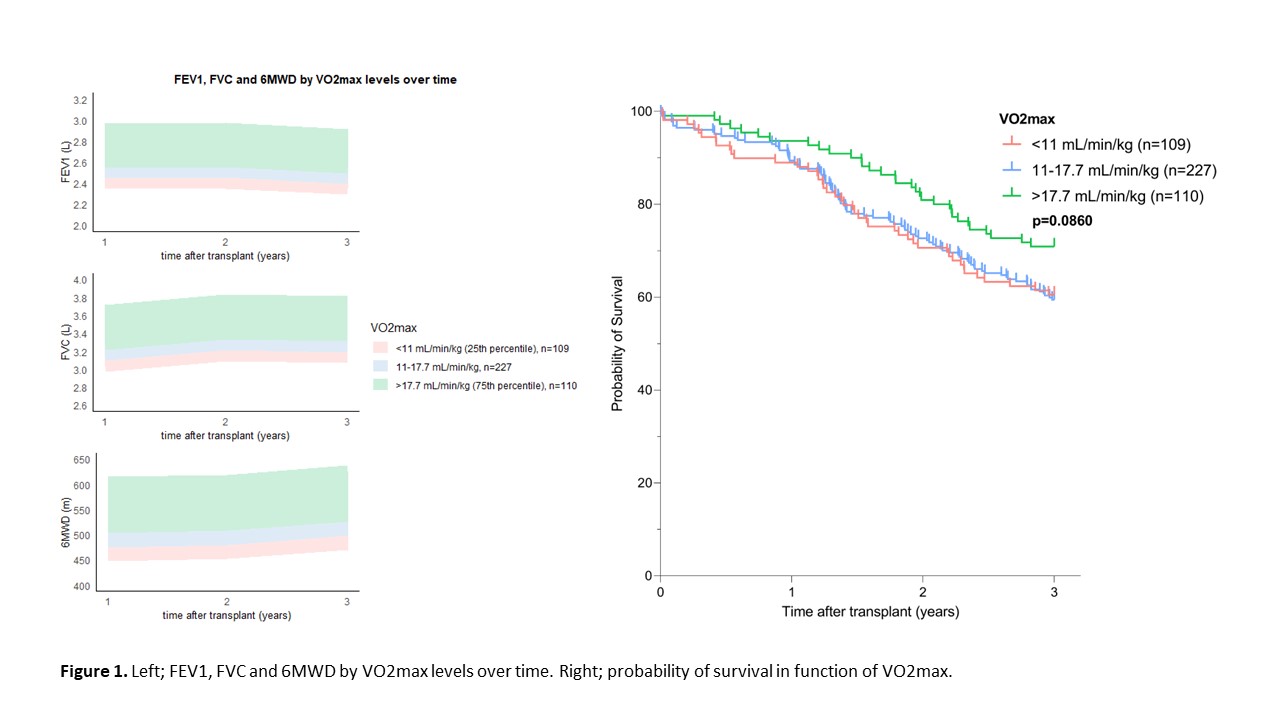Abstract
Functional testing is key in the work-up for lung transplantation. Six minute walk distance (6MWD) or cardiopulmonary exercise testing (CPET) are routinely used to assess the degree of functional impairment. We investigated whether pretransplant maximal oxygen consumption (VO2max) during CPET predicts outcomes after transplantation.
Lung transplant recipients transplanted between January 2010 - December 2020 in our institution were included in this retrospective study (n=729). Impact of VO2max (percentile <25 vs 25-75 vs >75) on 6MWD and spirometry at year 1, 2 and 3 after transplantation was assessed in a joint model, correcting for lung allocation score covariates. Kaplan-Meier survival according to VO2max was assessed with log-rank test.
Of the 729 included patients, 432 (59%) underwent CPET. Main transplant indications were obstructive disease (n=298), interstitial lung disease (n=102), pulmonary arterial hypertension (n=15) and redo transplantation (n=11).
VO2max was significantly associated with posttransplant FEV1 (p=0.0008) and FVC (p=0.0001) in multivariate analysis. VO2max was associated with posttransplant 6MWD in univariate analysis (p=0.0055), however, unconfirmed in multivariate analysis. Posttransplant survival tended to be better in patients with the highest VO2max (p=0.086) (Figure 1).
VO2max predicts post-lung transplant outcomes. CPET can help to identify frail patients to guide them into a prehabilition program.